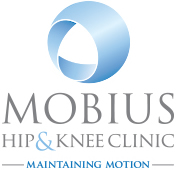
Revision hip replacement
In the majority of cases, total hip replacement enables people to live richer, more active lives free of chronic hip pain. Over time, however, a hip replacement may fail for a variety of reasons. In a revision total hip replacement, we remove some or all the parts of the original prosthesis and replace them with new ones. Revision total hip replacement is a longer, more complex procedure that requires extensive planning, and specialised implants and tools to achieve a good result.
Damage to the bone may make it difficult for us to use standard total hip implants for revision hip replacement. In most cases, we will use specialised implants with longer stems that fit deeper inside the femoral bone for extra support.
You will be recommended to have a revision total hip replacement if you are suffering from these conditions:
- Implant loosening and wear
- Infection
- Recurrent dislocation
- Fractures
- Significant leg length discrepancy (rare)
Revision total hip replacement is usually performed under general anaesthesia. It is more complex and takes longer to perform than primary total hip replacement. In most cases, the surgery takes from 2-3 hours. The incision may be longer than the original to allow the old components to be removed. Once the incision is made, we will examine the soft tissues in the hip to make sure that they are free from infection. We will assess all the metal and/or plastic parts of the prosthesis to determine which parts have become worn or loose or shifted out of position. The original implants are removed very carefully to preserve as much bone as possible. If cement was used in the primary total hip replacement, this is removed as well. Removing this cement from the bone is a time-consuming process that adds to the complexity and length of the revision surgery.
Sometimes, we must cut the femur to remove the previous implant. After removing the original implant, we will prepare the bone surfaces for the revision implant. In some cases, there may be significant bone loss around the acetabulum. If this occurs, specially designed metal plates can be added to the main components. Rarely, bone graft material may be used to help rebuild the acetabulum. The graft may come from your own bone (autograft) or from a donor (allograft).
Finally, we insert the specialised revision implant, repair any surrounding soft tissues that are damaged, and carefully test the motion of the joint. After surgery, you will be moved to the recovery room, where you will remain for several hours while your recovery from anaesthesia is monitored. After you wake up, you will be taken to your hospital room.
You will most likely stay in the hospital for several days. Although recovery after revision surgery is usually slower than recovery after primary total hip replacement, the type of care you will receive is very similar.
Because the procedure is longer and more complex than primary total hip replacement, it has a greater risk of complications.
The possible risks and complications of revision surgery include:
- Poor wound healing
- Reduced range of motion or stiffness in the hip
- Infection in the wound or the new prosthesis
- Bleeding
- Blood clots
- Bone fracture during surgery
- Damage to nerves or blood vessels
- Pulmonary embolism
- Dislocation
The majority of patients who have revision surgery experience favourable long-term outcomes, including relief from pain and increased stability and function. However, complete pain relief and restoration of function is not always achievable and some patients may still experience pain or discomfort following revision surgery.





